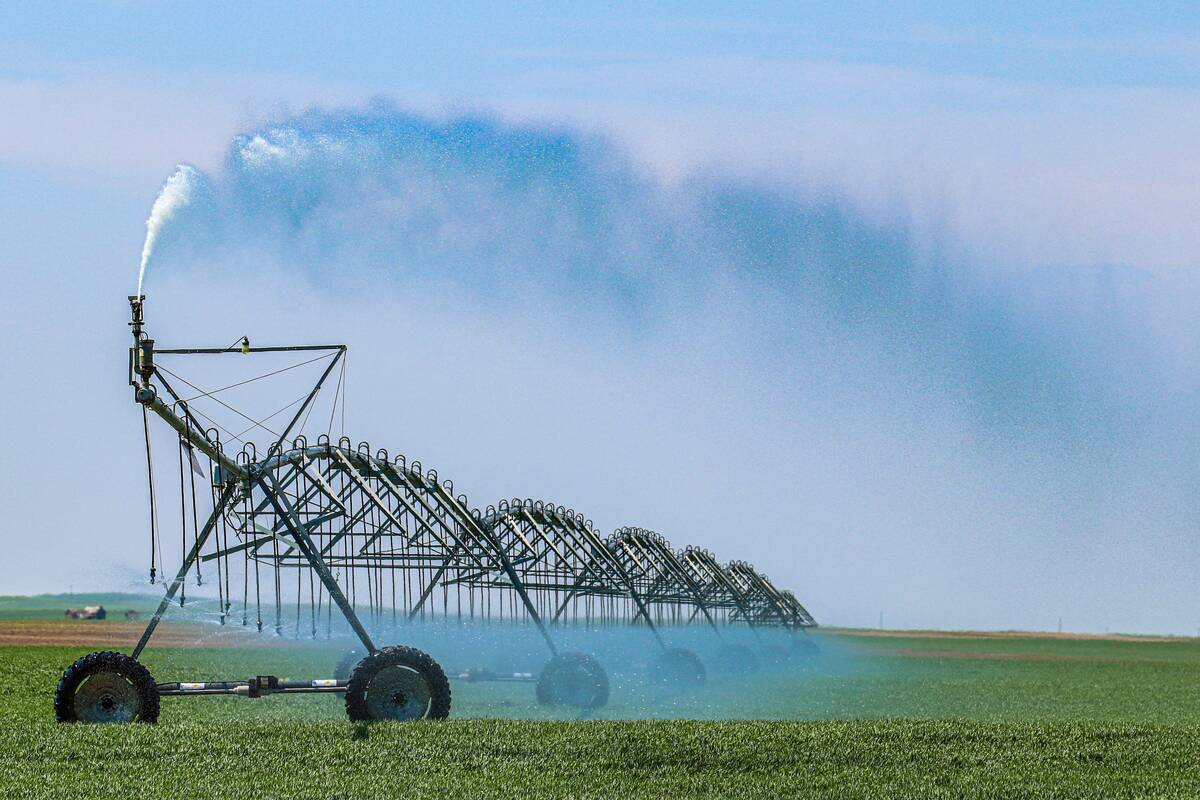WINNIPEG – The Canadian Wheat Board has no plans to put up a For Sale sign at its office in Beijing.
China, which once routinely bought four or five million tonnes of wheat annually from the board, has almost dropped off the radar screen in the wake of five consecutive bumper crops.
Last year, it bought just 220,000 tonnes of Canadian wheat, along with about 300,000 tonnes of barley to quench its voracious thirst for beer.
Some market analysts say that China’s new-found grain-growing prowess may keep it permanently on the sidelines.
Read Also

Irrigation capacity questioned
Some are highly skeptical that Canada could massively expand irrigation in Saskatchewan and Alberta so that 10 per cent of Canada’s farmland is irrigated.
But wheat board president and chief executive officer Greg Arason isn’t one of them.
He acknowledges that Canada will probably never again match the huge volumes of wheat it once regularly shipped to the world’s most populous nation, but he also said the board hasn’t given up on China.
“I’m not saying we’re out of the market,” he told the annual conference of the Canada Grains Council.
“I think there will be a market there in the future.”
Earlier in the conference, delegates heard an American grain industry analyst warn farmers and grain exporters not to pin their hopes for future prosperity on China.
“Skepticism forces me to find little to mandate China as a leading grain buyer of sufficient quantities to revive global grain exporting,” said Morton Sosland, editor of Milling and Baking News and World Grain.
He said a policy of self-sufficiency, combined with biotechnology-driven productivity increases, will keep the lid on Chinese imports.
Later, during a question and answer session with Arason, agricultural economist Andy Schmitz said that’s a scary prospect for prairie wheat growers.
“In Saskatchewan, we might as well sell our farms if China stays out of the market.”
The wheat board’s CEO replied that the Chinese market is changing, not disappearing.
During a trade mission to China in January, he said, board officials were told that the emphasis in the future will be on quality rather than quantity.
“They’re telling us they will no longer be … looking for large volumes of grain to the extent that they were in the past, but they expect to be a market that’s looking for quality and using that quality to blend with their local production.”
Over the past five years, China has produced an average wheat crop of 112 million tonnes. In the previous five years, the average was 100 million tonnes.
But Arason said prairie farmers know only too well how unpredictable production can be.
“Certainly they have some reserves built up, we know that,” he said.
“But if we saw a trend towards poorer crops there, it could change things dramatically just because of the sheer numbers involved.”
The world has changed from the 1970s and 1980s when two or three big customers, notably the central buying agencies of China and the former Soviet Union, could be counted on to buy 10 million tonnes of wheat from Canada every year.
Now the board sells to more than 200 customers in 70 countries. Arason said that it’s definitely more of a challenge, but he believes the board is now doing a better job getting money out of the marketplace.
“When we focus on service, and working with customers to make the best use of that product in their manufacturing plants, I think we are able to get more value from that additional service than by simply selling big chunks of grain to two or three customers.”
















